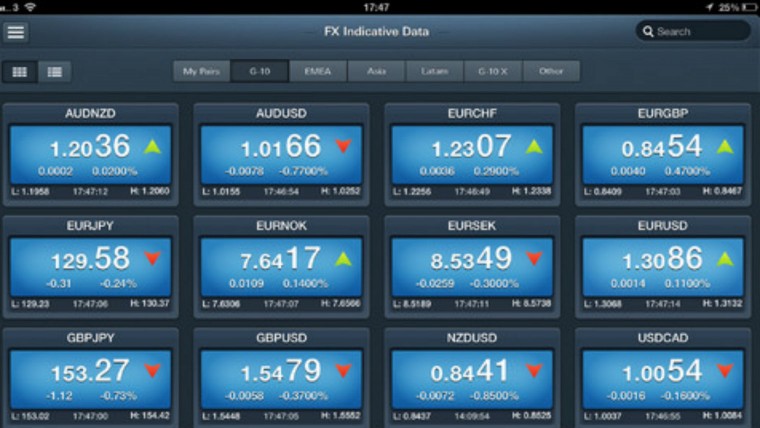For many years, banks have supported companies through in-depth relationships based upon people. Subject matter expertise and intellectual capital are important ingredients of these relationships as the core of any company’s needs from its bank is that they understand their business.
But understanding the company’s business no longer cuts the mustard in this increasingly dynamic, globalising world where multinational corporations need trade finance, working capital and supply chain support across regions in multiple currencies, and across many complex jurisdictions. This is where technology is making a difference.
A great example is the work that Deutsche Bank has put into their Autobahn App Store. Like an iTunes for corporate treasurers, the app store provides an app for anything and everything a company could need from foreign exchange (FX) netting and pooling to cash flow forecasting.
The key to this is that the almost 200 apps on offer allow a treasury operation to deploy apps based on staff needs. Therefore, the more junior treasury members may deal with just 15 or 20 apps that are appropriate to their level of operation, while more senior staff members get 40 or 50. The point here is that these are not just any old apps, but they are the ones specific to each company’s trade flow needs.

Deutsche Bank’s Autobahn App on iPad
This is where things have changed dramatically in just the last decade. Ten years ago, providing a large FX balance sheet movement from Asia to Europe would take place in a batch overnight. Today, this can be done in near real-time, and hence companies are looking for treasury operations that can be managed in real-time.
The Deutsche Bank app store goes some way towards delivering this but, in another example, the API services (application programming interfaces) offered by Ukrainian bank PrivatBank also impresses. In this instance, the bank has analysed their customers’ needs and broken down the bank’s operations into many discrete API components.
Easy-to-use front-end corporate apps allow the accounts payables and receivables operation to be supported more efficiently
APIs allow anyone to take these pieces of code and plug them into their own operations. Therefore, you can consider a requirement for using FX hedges in any investment in orders from one country, let’s say China. Bearing in mind that the price of renminbi may change between your order date and delivery of goods, an auto-hedge against such currency fluctuations is a criticality in your trade flows and the ability to just plug the code into your order process to provide the auto-hedge is what these APIs allow you to achieve.
In other words, you have easy-to-use front-end corporate apps to allow the accounts payables and receivables operation to be supported more efficiently, with APIs layered over these apps to make the processes completed tailored to your treasury needs.
These are just two examples of key developments in bank technologies to corporate customers that are changing the game. There are many others, such as the data analytics being provided for corporate operations by banks such as JPMorgan. Here, the bank has worked hard to provide information enrichment of messages to their clients, so they are more informed about monetary movements.
An illustration is that most of the time, when you receive a payment, all you get is the stripped-down message of who it came from and when. In the case of banks that are using data analytics effectively, customers receive all the information trail of any payment received or made. So if you need the detail of exactly what was being paid for by whom, it becomes a pure drop-down from the basic payment information, rather than a call to the bank.
This is not a static process though. After all, we are nearly of an age where the internet of things arrives and everything has a chip inside. In this world, information enrichment becomes even more interesting, so consider this scenario, just a few years from now.
You make the order to China with your renminbi-hedge, and your apps and APIs show the processing of that order, its fulfilment and shipping all in real-time. But, crucially, every component of the goods you have ordered is now communicating its position and location through the internet of things. This will make manufacturing just-in-time in real-time globalised, and banks are already working on how they can provide the transactional and informational capabilities to make this a reality today.

